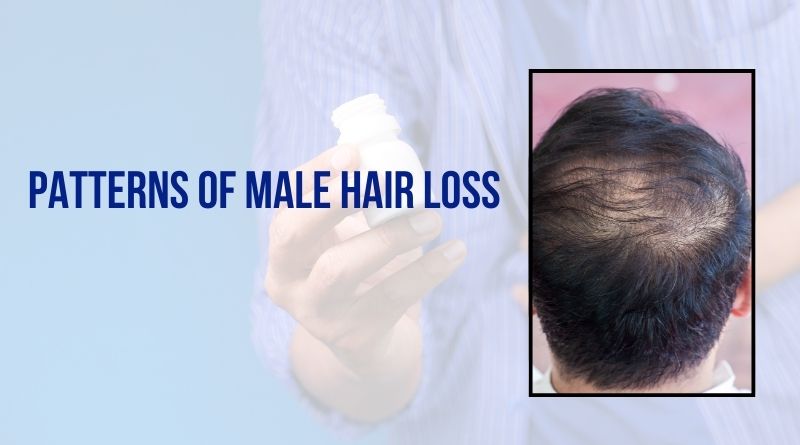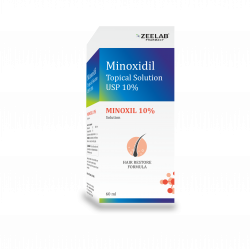Patterns of Male Hair Loss


Hair loss in men is a common concern and can begin as early as the late teens or early twenties. The most frequent cause is male pattern hair loss, also known as androgenetic alopecia. Understanding the patterns of male hair loss is essential for early detection and effective treatment. This blog explores the various types of male pattern baldness, signs to look for, and the best treatments available for hair regrowth in males.
What Is Male Pattern Hair Loss?
Male pattern hair loss, or male pattern alopecia, is a hereditary condition caused by the hormone dihydrotestosterone (DHT). It leads to a progressive thinning of hair, typically starting at the temples or crown. This condition is one of the most common types of hairfall in men and affects a significant percentage of males by the age of 50.
Common Balding Patterns in Men
There are several types of balding patterns in men. Each pattern shows a different way hair loss progresses over time. Recognizing these patterns early can help in choosing the right treatment for male pattern baldness.
- Receding Hairline: One of the first signs of early male pattern baldness. Hairline starts moving back from the forehead, usually forming an “M” shape.
- Thinning Crown: Hair starts to thin or fall out from the top of the head or crown area, another common sign of male baldness.
- Overall Thinning: Hair becomes sparse across the entire scalp. Often seen in the later stages of men's hair balding.
- Horseshoe Pattern: Hair remains on the sides and back of the head, but the top and front become bald – a classic male pattern baldness look.
Male Pattern Baldness Early Signs
Identifying the early stage of male pattern baldness is key to managing and slowing down hair loss. Here are some early indicators:
- Widening Part: If the part in your hair is getting wider, it could signal the beginning of male pattern alopecia.
- Visible Scalp: Noticing more scalp through your hair may mean hair is thinning male.
- Hair Shedding: Losing more than the usual amount of hair in the shower or on your pillow is a sign of hairfall in men.
- Slow Hair Growth: When your hair takes longer to grow back, it may be an early sign of hair baldness in men.
Causes of Male Pattern Baldness
While male pattern hair loss is primarily hereditary, other factors also contribute:
- Hormonal Imbalance: High levels of DHT shrink hair follicles, causing thinner and shorter hair.
- Genetics: A family history of male pattern baldness increases your risk.
- Stress and Lifestyle: Poor diet, stress, and lack of sleep can worsen alopecia and male pattern baldness.
Female vs Male Pattern Baldness
Female male pattern baldness differs in how hair loss presents. Women usually experience overall thinning, whereas men show defined balding patterns. However, the root causes, such as DHT and genetics, are similar.
Effective Treatments for Male Pattern Baldness
Although there’s no permanent cure for male pattern baldness, several treatments can help manage it and promote hair regrowth in males.
- Minoxidil: A popular over-the-counter medicine for male pattern baldness. Applied as a topical solution, it helps stimulate hair follicles and improve hair growth in males.
- Finasteride: An oral prescription drug that reduces DHT levels, slowing the progression of men balding.
- Hair Transplant: A surgical solution for severe cases of male baldness. Hair follicles are transplanted from dense areas to balding spots.
- PRP Therapy: Platelet-rich plasma therapy encourages natural hair regrowth in early stages of male pattern alopecia.
- Herbal Remedies and Oils: Ayurvedic oils and shampoos help nourish hair and may slow hairline loss in males.
Lifestyle Tips to Manage Balding
Besides medical options, lifestyle changes can also help treat male pattern hair loss effectively:
- Eat a balanced diet rich in protein, iron, and vitamins.
- Reduce stress with yoga and meditation.
- Avoid harsh shampoos and chemical hair products.
- Use mild, herbal oils and shampoos suited for hair thinning treatment male.
- Massage your scalp regularly to improve blood circulation.
Best Treatments and Medicines
Looking for the best baldness treatment for males? Here are a few options:
- Minoxidil Topical Solution: Ideal for the early stages of men hair balding. Helps increase hair density.
- Finasteride Tablets: Prescribed to block DHT and support hair regrowth in males.
- Biotin Supplements: Support hair strength and growth, especially useful during the early male pattern baldness phase.
Conclusion
Recognizing the male pattern baldness early signs is the first step toward finding the right solution. Whether you’re noticing a receding hairline, thinning crown, or more hair fall, there are effective male pattern hair loss treatments available. Choose a plan that includes proper medication like minoxidil topical solution, lifestyle improvements, and dietary changes. For long-term results, consistency is key. Always consult a healthcare provider before starting any treatment to find the best medicine for male pattern baldness for your specific needs.
Start your hair journey today and take control of your mens baldness with the right care, awareness, and treatment options.















 Added!
Added!